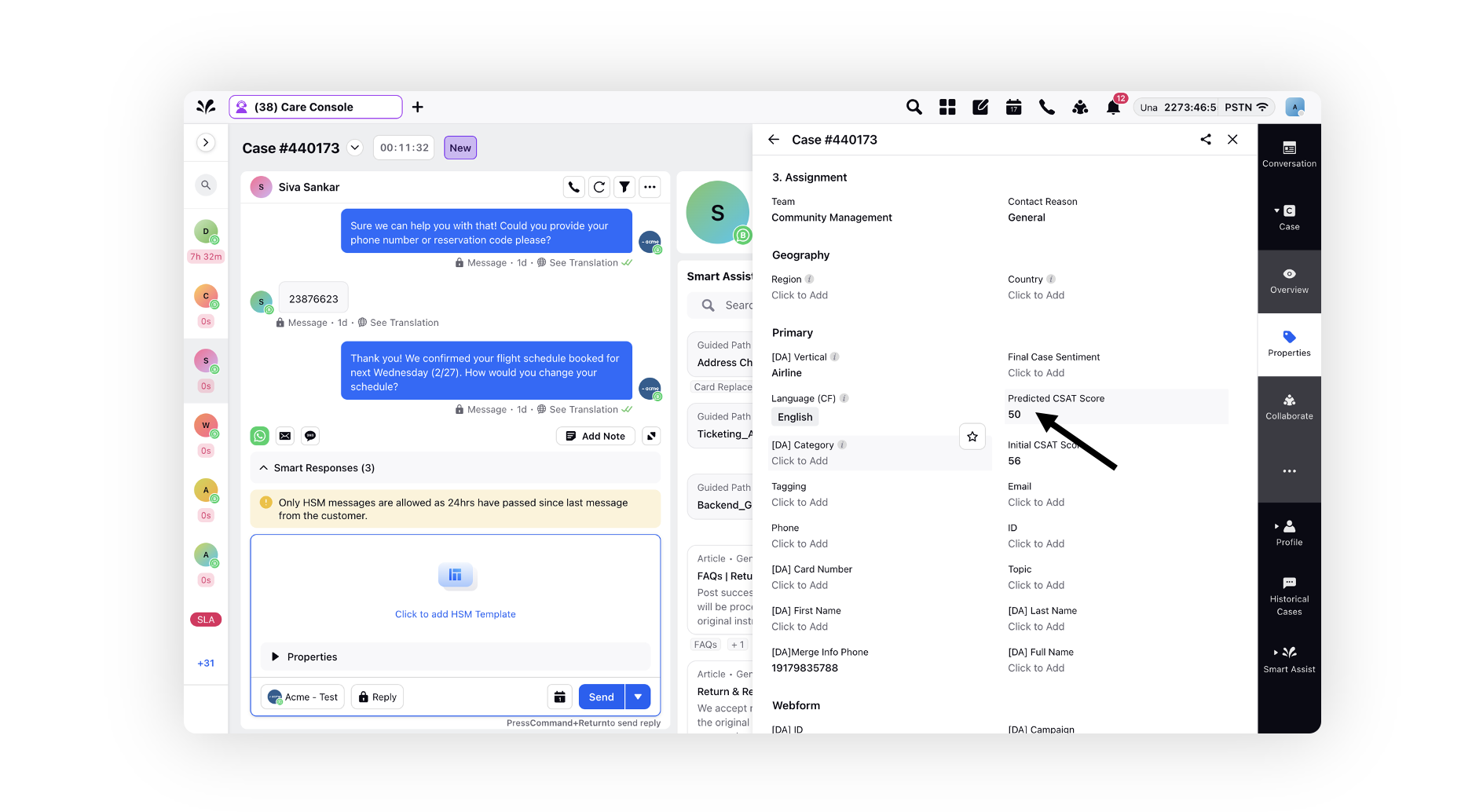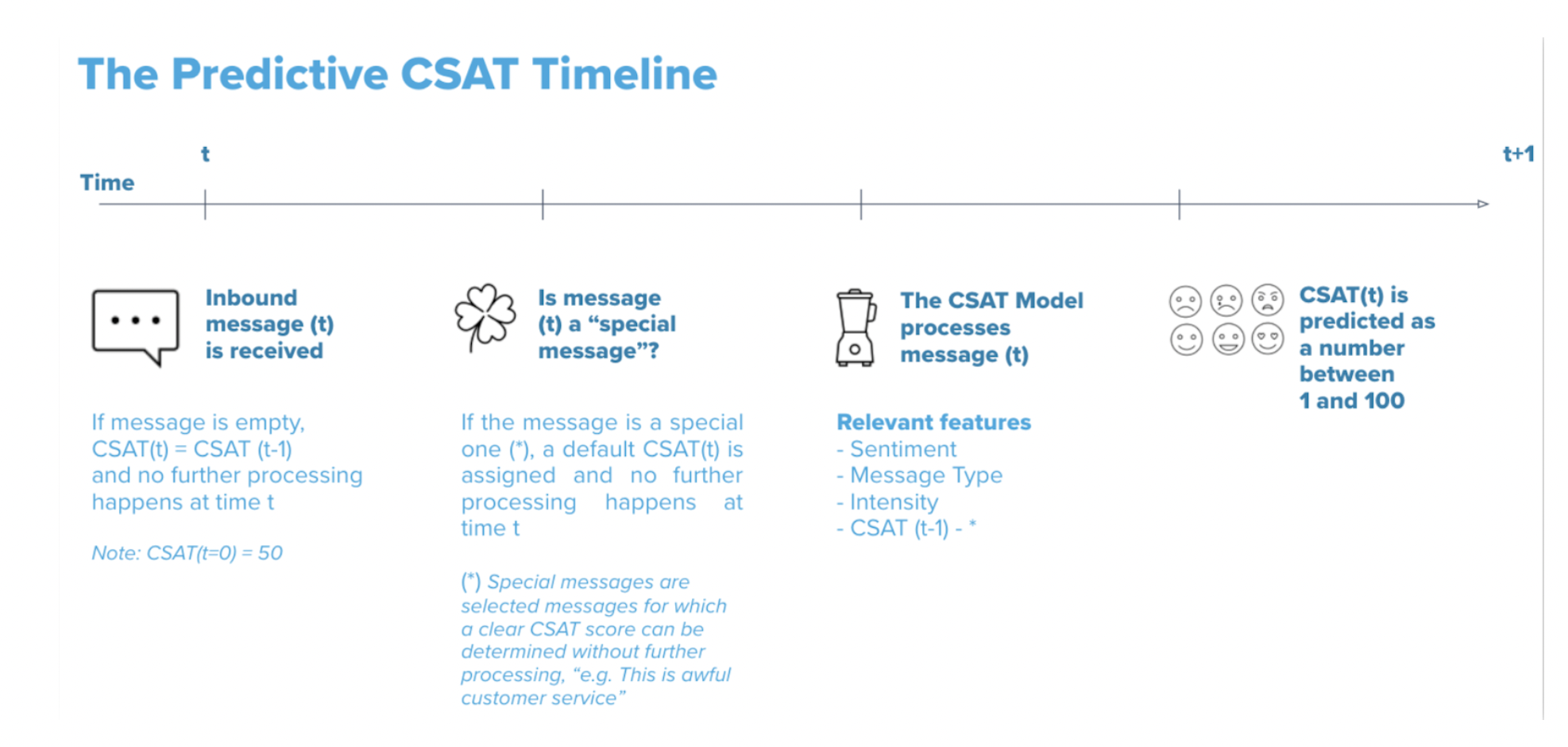CSAT Score Overview
Updated
Introduction
Customer satisfaction has always been crucial to the health and growth of a business – but in this age of social media, unhappy customers wield greater power than ever before. An angry tweet, blog post, or Facebook rant may go viral, causing irreversible damage to a brand. On the flip side, satisfied customers – your brand “ambassadors” – often promote and recommend their favorite businesses to others, increasing both loyalty and revenue.
What is the Predicted CSAT Score?
Customer Satisfaction Score (CSAT) is a basic measurement of a customer’s satisfaction with a brand’s product and/or services. Marketers and brands can use CSAT to determine customers' level of satisfaction at key interaction times, such as the moment of purchase, the onboarding process, a support ticket exchange, and a phone or digital conversation with customer service.
Now, Sprinklr has the capability to predict CSAT scores on a conversation using AI. The score is between 1 to 100 which indicates the level of satisfaction of a customer at any particular point in the conversation, and the score is updated after every fan message in the conversation.

Use cases
1. Case Escalation - Cases in which the CSAT drops below a certain level anytime during the conversation can be automatically escalated to the senior personnel with the motive of increasing the Customer Satisfaction Score.
2. Prioritisation and Assignment of Cases - It helps the team to prioritise more important and urgent cases that comes in on a daily basis. If the predicted score is below the expectations then cases can be allotted to the experienced agents.
3. Suggestive Actions - CSAT can help agents to take the best actions. For example - If there is a drop in the score then the agent can give discount/offers to the customers that will result in increasing the score.
4. Measuring agent's performance - CSAT can be used as one of the important parameters to analyse the agents' performance, based upon how adept they are in handling the cases assigned to them.
5. Reducing potential churn - CSAT can help identify a possible upcoming churn during the conversation by looking at the way how the conversation is going.
How is the model trained?
The AI model has been trained by analysing the customers-agent conversations curated from different industries so that the model understands the industry-specific context. Several factors related to the message, as explained below, are taken into account while predicting the score:
1. Sentiment
Negative, Positive or Neutral sentiment are the three basic sentiments which in general means the attitude or opinion that the customer expresses.
2. Emotion
Customer emotions such as Anger, Happiness, Surprise, Disgust, Sadness, and Fear are considered by the model to predict the CSAT score.
3. Intensity
Intensity of a sentiment specifies the how positive or negative the sentiment is. It is an indicator of the magnitude of the sentiment that has been identified. This extent is calculated based upon certain intensity indicators words used in a sentence. For example -
"The product packaging was not good" displays a negative sentiment, but if the statement made by fan is `The product packaging was very bad` shows a negative sentiment with a more negative intent.
4. Time of Reply
The time that is taken by the agent to reply to a message. For example -
If the agent is taking a lot of time to reply then the CSAT score will vary according to the time of reply sent by the agent.
